This selection of seven photos is a fairly representative cross-section of the bird species I’ve been seeing recently. None of them are prize-winners but that’s sort of my point. Rather than feature one or two images that are special in some way it’s my intention here to give readers a feeling for some of the birds present in northern Utah this time of year. Each of these images was taken in the last couple of weeks.
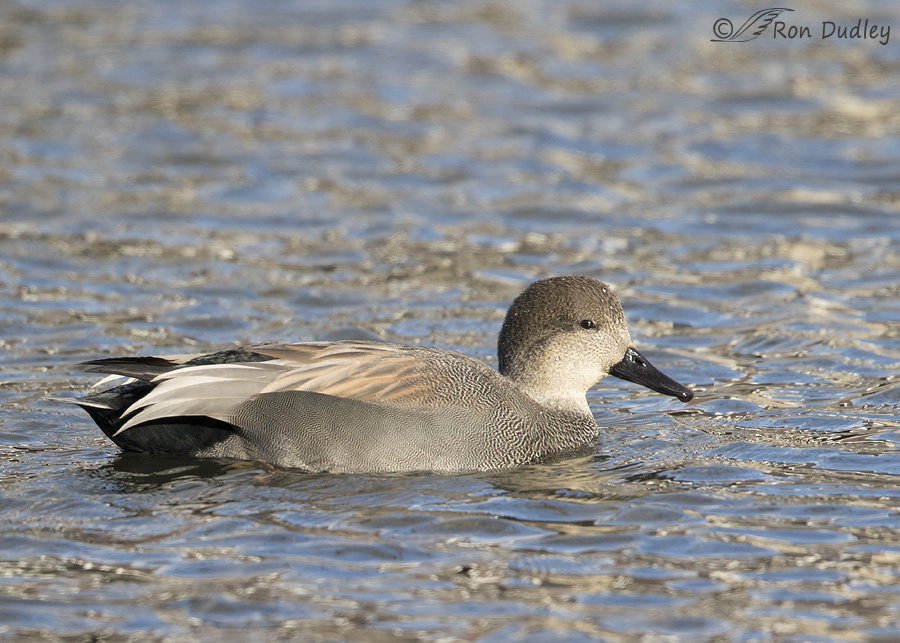
1/2000, f/6.3, ISO 800, Canon 7D Mark II, Canon EF 500mm f/4L IS II USM + EF 1.4 III Extender, not baited, set up or called in
This male Gadwall and his mate have been hanging out with the relatively tame Mallards at a pond near my home. Normally I wouldn’t be able to get anywhere near this close to wild Gadwalls but I think “tameness” can be contagious to some degree – these two ducks see that the Mallards have no fear of nearby vehicles so it gives them a feeling of security. At least that’s my theory…
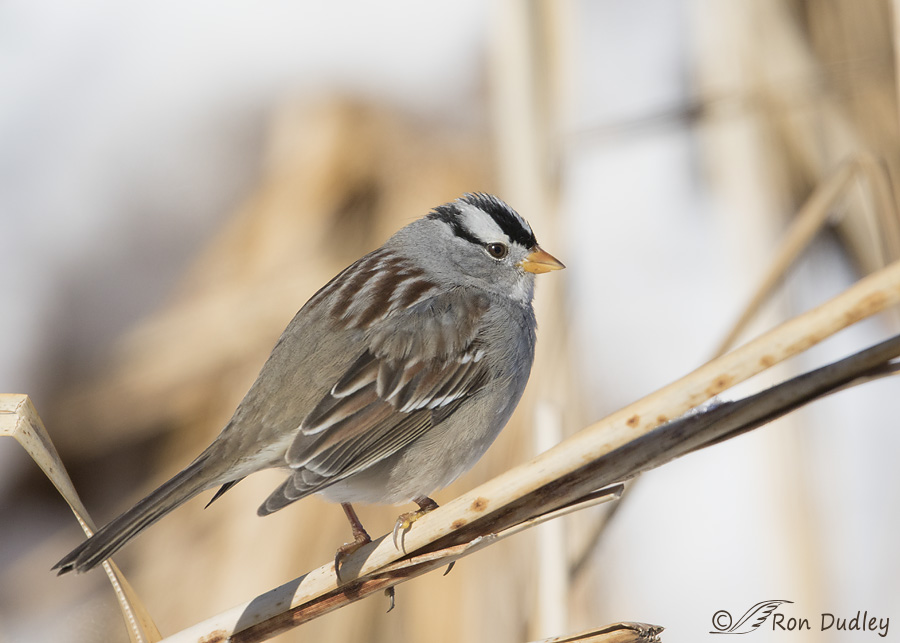
1/3200, f/7.1, ISO 500, Canon 7D Mark II, Canon EF 500mm f/4L IS II USM + EF 1.4 III Extender, not baited, set up or called in
This is an adult White-crowned Sparrow photographed in the phrags and snow at Farmington. This species is the most common sparrow in the areas I regularly haunt.
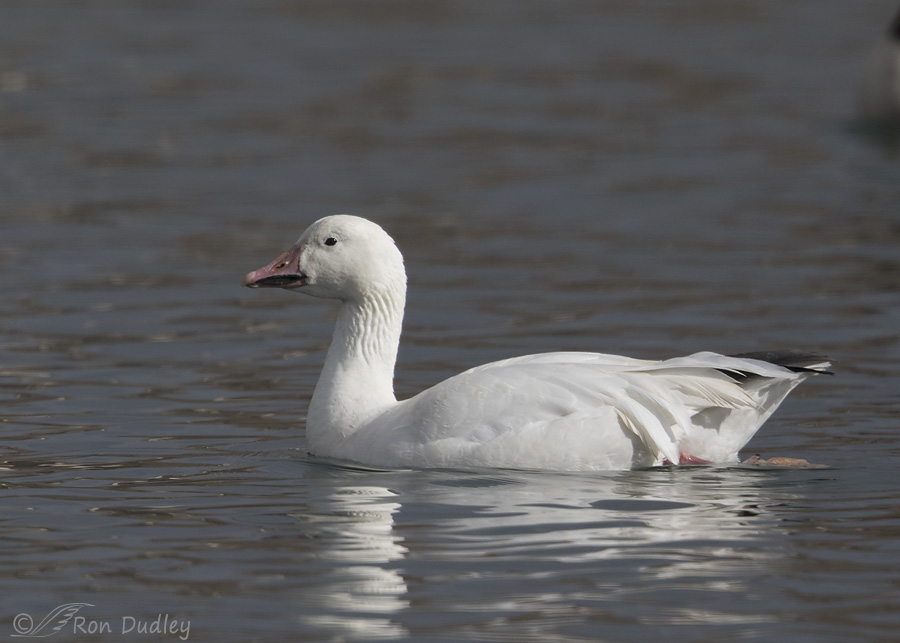
1/5000, f/6.3, ISO 400, Canon 7D Mark II, Canon EF 500mm f/4L IS II USM + EF 1.4 III Extender, not baited, set up or called in
I seldom get a chance at a Snow Goose so I was pretty tickled to find this one yesterday at a different pond near my home. This bird was hanging out with several hundred Canada Geese so it stood out like a sore thumb. The image is a fairly large crop and only of documentary quality.
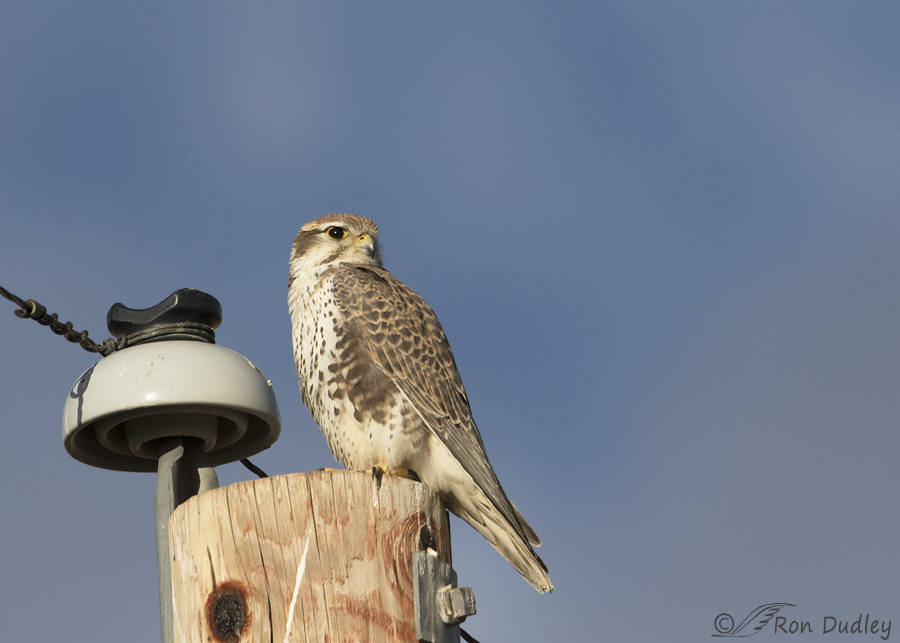
1/5000, f/7.1, ISO 400, Canon 7D Mark II, Canon EF 500mm f/4L IS II USM + EF 1.4 III Extender, not baited, set up or called in
A Prairie Falcon on a pole in Box Elder County. Typically I can’t get anywhere near these guys but this one seemed to take a shine to me and stuck as I approached so I decided to oblige it with my camera despite the hated wire and insulator and the steep angle.
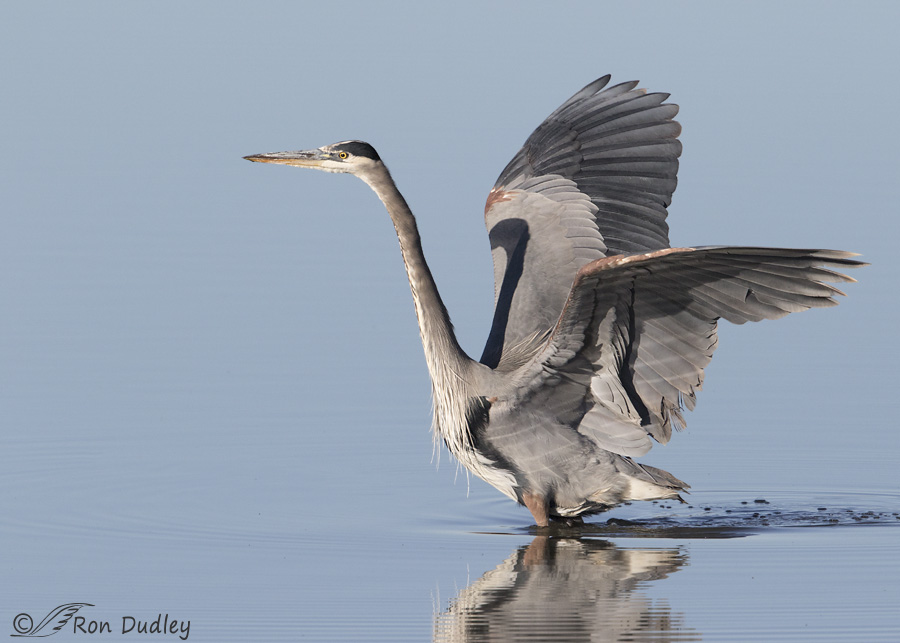
1/3200, f/8, ISO 500, Canon 7D Mark II, Canon EF 500mm f/4L IS II USM + EF 1.4 III Extender, not baited, set up or called in
I’m not sure what this Great Blue Heron at Farmington was trying to do when it raised its wings and flapped them slowly a few times as it waded forward in the water but I thought it was an interesting pose and I liked the shadow of its long neck and head on the wing (though I do wish the shadow had included the beak).
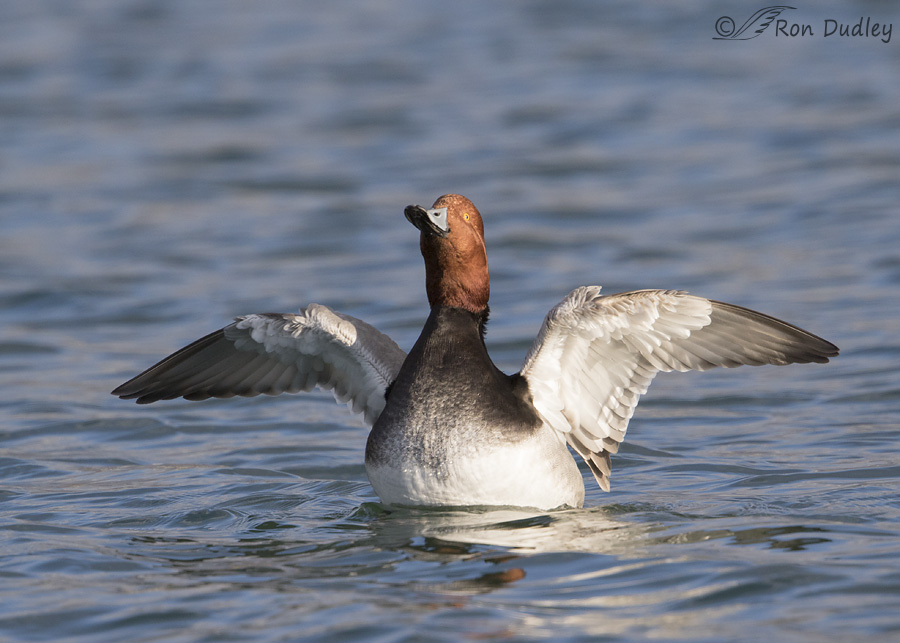
1/2000, f/6.3, ISO 640, Canon 7D Mark II, Canon EF 500mm f/4L IS II USM + EF 1.4 III Extender, not baited, set up or called in
This is one of the three male Redheads that have been hanging out on the same pond I found the Snow Goose on. I’ve attempted to photograph these ducks a half-dozen times in the last few days but only once did they come in close enough to me for decent photos.
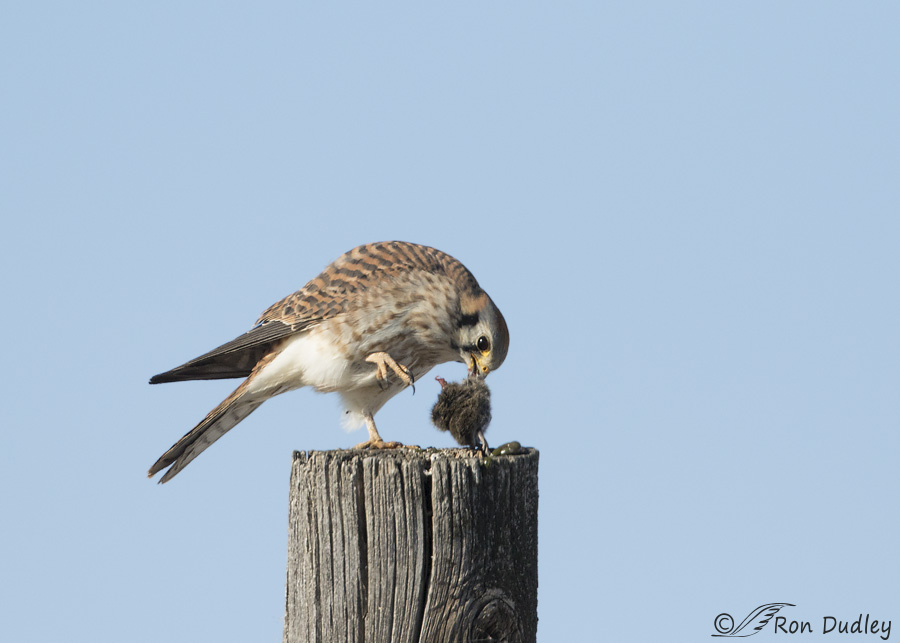
1/3200, f/6.3, ISO 500, Canon 7D Mark II, Canon EF 500mm f/4L IS II USM + EF 1.4 III Extender, not baited, set up or called in
And finally, an American Kestrel with a vole at Farmington. I wasn’t particularly close to her but I loved this pose. There’s a vole gut pile on the post and it almost looked like in her daintiness she was trying to avoid despoiling her clean right foot as she ate.
As of late I’m paying more attention than usual to the number and variety of birds in my area and I can’t help but be alarmed at their relative scarcity compared to past years. I fear that the drought, overuse of water resources by industry and agriculture and the resulting dramatic reduction in the size of the Great Salt Lake (its surface area is only 29% of its former self) has had a disastrous effect on bird populations in general in Northern Utah.
And that thought depresses me.
Ron
PS – Sadly, my problems with Comcast continue. Many readers are having no problems with my posts but for others some images or the entire blog won’t load. We’re doing our best to solve the problem…


Ron. Many folks on Raptorcare are commenting on seeing fewer RTHAs than recent years. Some out west but some in other parts of the country.as well. Diana
WOW, Ron!! You see a wonderful array of birds and I’m SO jealous. At least I can enjoy your photos of them even if I’m not seeing them up close and personal. I loved all of them but the Redhead’s pose with his chest stuck out front makes him look like he’s quite full of himself – made me laugh!! Not sure if Comcast is still a problem but for your info, I see all 7 photos.
Good, I’m happy to hear that you’re not having any problems loading the photos, Jo Ann. Some still are. I guess it’s going to take a personal screaming and yelling trip down to Comcast tomorrow morning.
Love the vignettes you have given us today.
Miss Dainty is a charmer.
Sigh on the unmentioned topics. Sometimes I despair of our species. Often I despair.
Our current guvermint is locked into the coal is good, profits are better mindset – and is prepared to risk (despoil) the Great Barrier Reef to prove their point.
It’s discouraging, isn’t it, EC. I read some very alarming information about the dying Great Barrier Reef just a couple of days ago.
Love, love, love these “31 flavors” posts! So cool to see the variety — from the sublime (Miss Dainty and the snow goose) to the ridiculous (the heron). We have a few “resident” Great Blues at a nearby regional park and I’m convinced that they just do a bunch of weird stuff for their own entertainment sometimes!
I’m drawn back again and again to the Gadwall shot and the way you’ve captured the light on the water. It’s as if he’s swimming through shards of glass. Really neat effect!
(Don’t get me started on the environment and the incoming admin…)
“Don’t get me started on the environment and the incoming admin…”
That’s my mantra also, Marty. I could rant for an eternity on either of those subjects but I have to continually remind myself that this isn’t the forum for it – particularly the second topic.
It might be when he meddles in your states environment. VBG!!
Calm. Blue. Ocean. Calm. Blue. Ocean.
I’m really trying to focus on what I can do for my little piece of the animal world. At this point, that’s becoming my survival tactic. As we say in chemistry class, if you’re not part of the solution, you’re part of the precipitate.
Hope there are lots of snow geese down there. Hundreds landed in the Butte pit, and sadly hundreds have died. They try to haze them away, but that is not very effective. They really need to fix that nasty pit.
As usual, I really enjoy your photos and comments.
Jane, we typically see fair numbers of Snow Geese up in Box Elder County and they congregate in huge numbers near Delta, Utah. I’m seldom able to get close to them though.
It was great seeing what you’re seeing. Scary that you’re not seeing what you’re used to seeing. Don’t know much about the Great Salt Lake but always imagined that it’s water supply was fragile . Out here in Calif. it’s much wetter than last winter. Hope the rains get to you. John
Glad to hear you’re getting some rain in CA, John. It’s about time!
Interesting variety of birds you have. I especially like the shot of the American Kestrel (surprise, surprise!), followed by the Prairie Falcon and the Redhead. The last one surprises me since I’m not generally a fan of ducks, but this guy looks to me like he’s just relaxing and enjoying something. I’m one of the lucky ones who has had no problem loading your blog; I hope you can get the problem resolved soon.
Me too, Susan. I’m getting very tired of it…
On reading about HIGE numbers of bird deaths due to poisoned water, I’m wondering if maybe we got the president we deserve as subhumans…i wishball involved in that water debacle could be forced to drink it…and please send some to the White House….
That would certainly get their attention, Patty.
All excellent shots, but the Prairie Falcon didn’t show up on my screen, don’t know why.
Do you ever get a Ross’s Goose? The lack of a black bill grin is key.
Such a shame about the geese at Berkley Pit.
Getting snow and more cold!
Dick, it didn’t show up because of my issues with Comcast. It causes problems for some viewers but not for others.
No, I’m pretty sure I’ve never photographed a Ross’s Goose.
Great images Ron. It is nice to see the variety of birds you are seeing. That is sad news on the lack of water in the Great Salt Lake Basin. I know that the Salt Lake is very important to the migratory birds of North America. I hope that we are proactive in protecting (improving) the wetlands before they are too dry to bring back. I know… I am a naive idealist I can only imagine how areas like Farmington Bay and Bear River NWR must be impacted by sustained drought and climate change.
I can only imagine how areas like Farmington Bay and Bear River NWR must be impacted by sustained drought and climate change.
Ed, Add Antelope Island to your list of places negatively impacted by the calamitous drop in the lake levels. It’s really sad out there…
All wonderful shots Ron!
charlotte
Thanks, Charlotte.
Great selection of photos. Thank you for sharing them.
I also heard about the Snow Geese last night and that is very sad and troubling news.
Ron. Love the fAMKE avoiding the guts. The m I feed leaves the guts all over.
Thanks for the images. Are RTHAs less common where you are?
Diana
Less common than what, Diana? We have a fair number of red-tails but there doesn’t seem to be as many of them as in previous years.
Fantastic post..I love seeing the variety in your area of the country. Beautiful!
Thank you, Traci.
Beautiful shots and wonderful documentation of the local birds. They are trying to get snow geese that have parked in the Berkley Pitt in Butte to “move on” as the water is toxic.
They are trying to get snow geese that have parked in the Berkley Pitt in Butte to “move on” as the water is toxic.  -8 plus wind chill here this morning…………
-8 plus wind chill here this morning…………
I’ve been reading about those Snow Geese in the Berkley Pit, Judy. I’ve read that almost 10,000 of them have died in that cesspool and that fact makes me very, very angry.
They haven’t had a huge problem for a number of years, but this is going to be one of them – does them like they should be able to mitigate the water conditions.